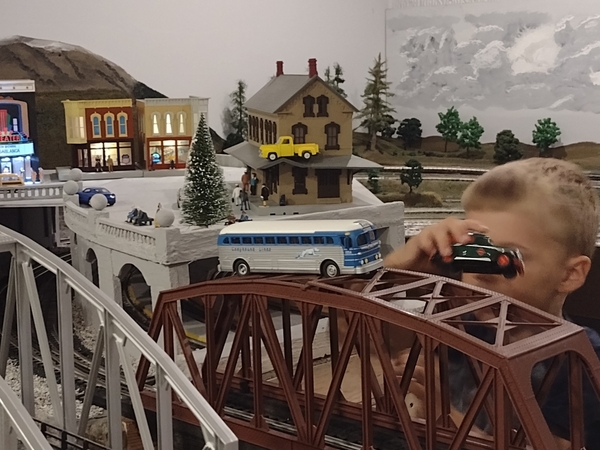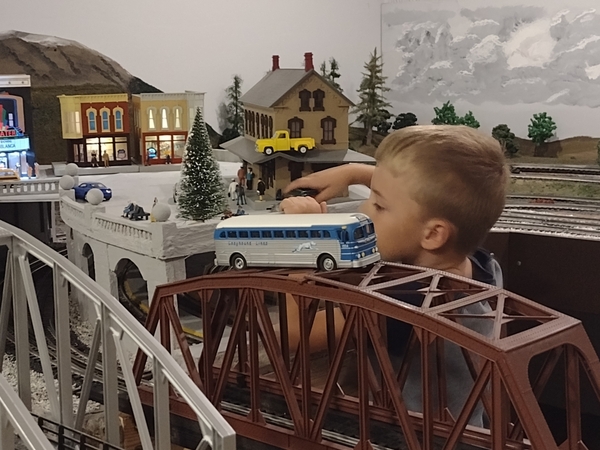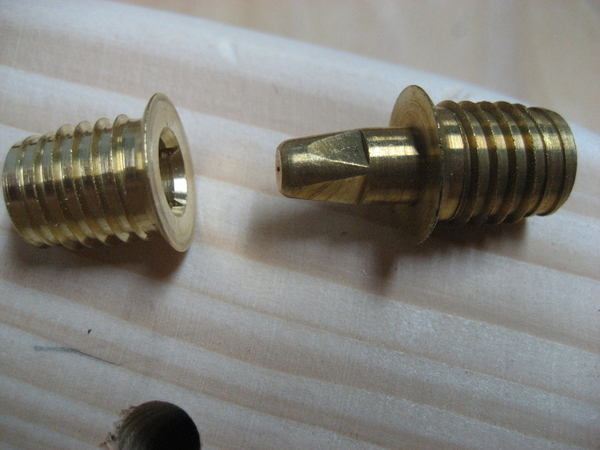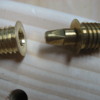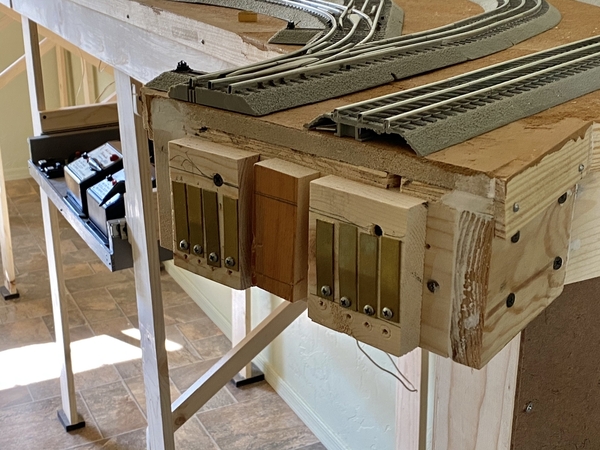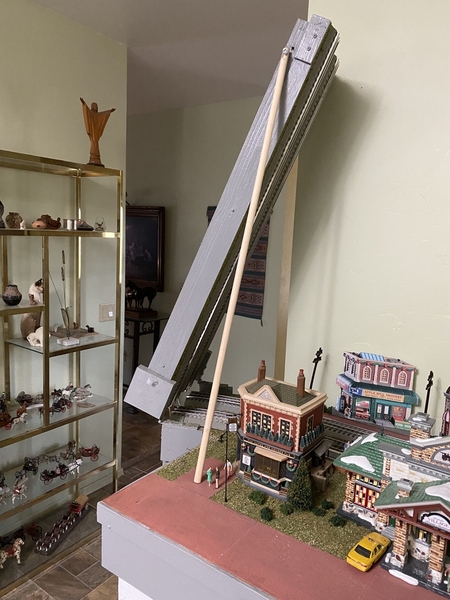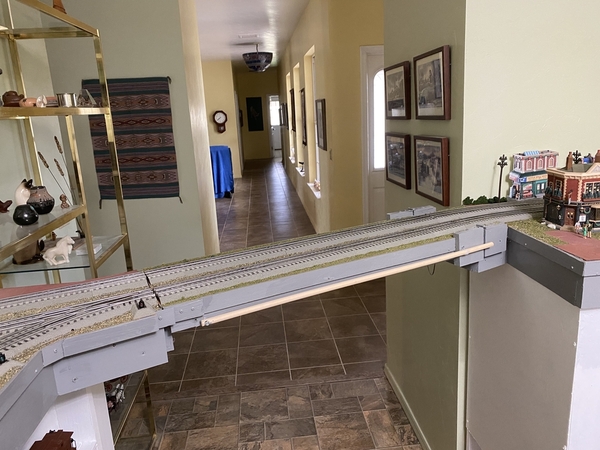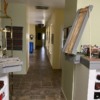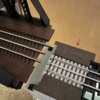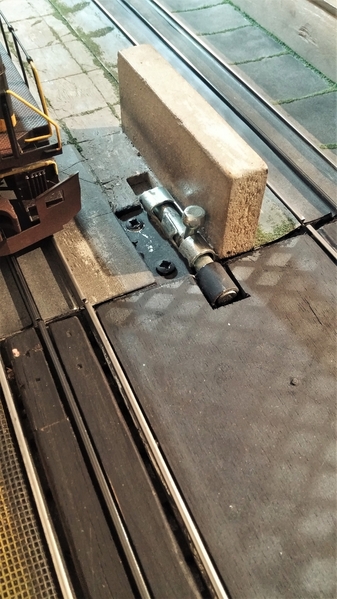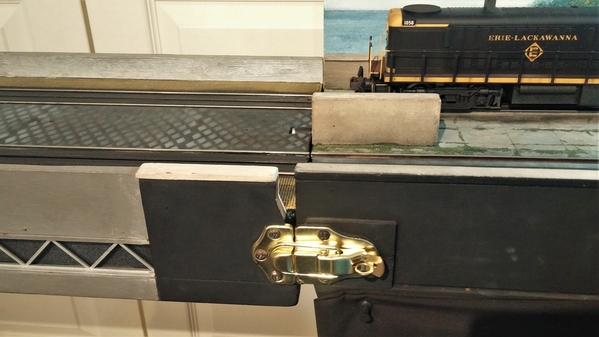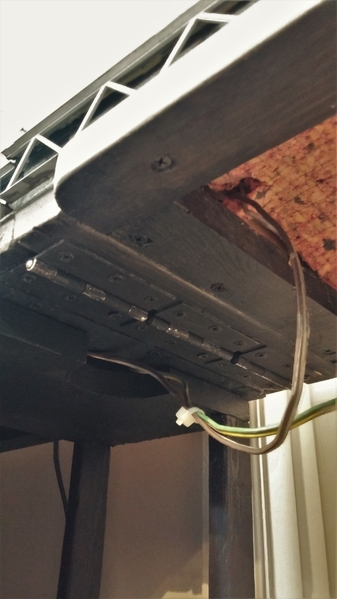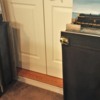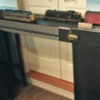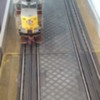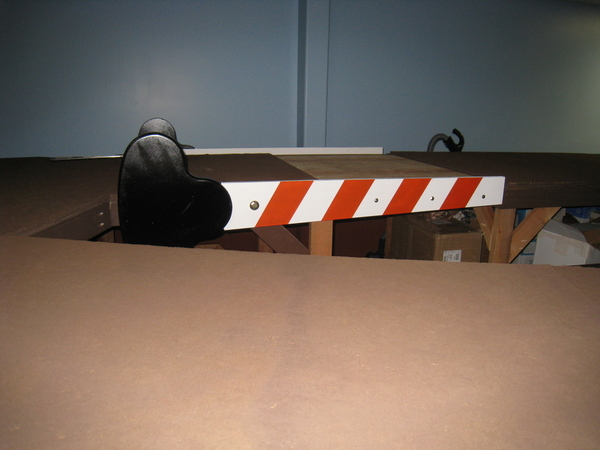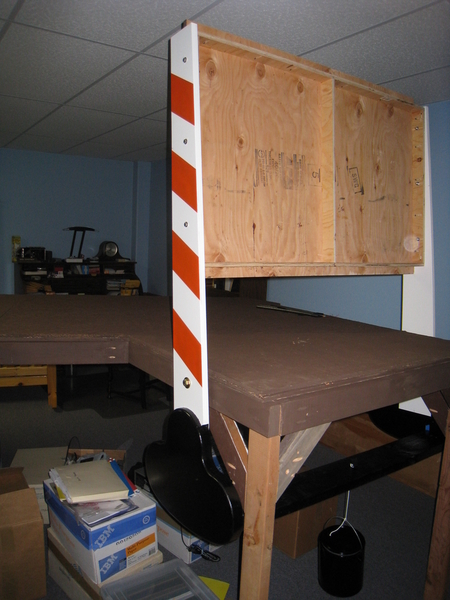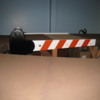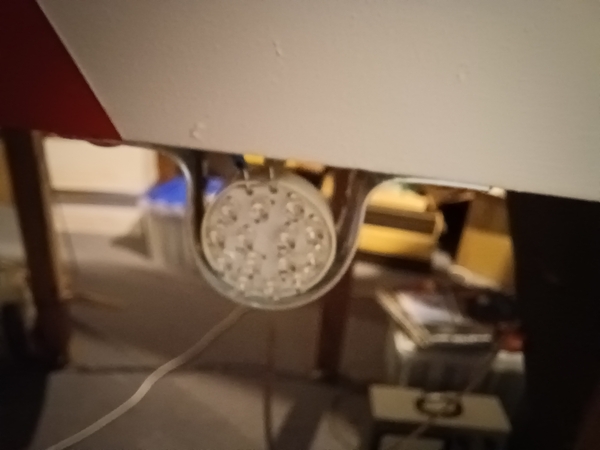To add to my earlier post, I took a couple pictures of my installed bridge. Forgive some of the painting and weather work - it’s not done yet.
The Lionel bridge makes contact on each abutment in two ways. First, there is a pin each rail lies upon when the bridge is in place. Also, there is a metal sprung contact below each rail.


To Secure the bridge in place, there are pins on the bottom of each expansion joint Also, the rail, being Fastrack, sets inside mod the track pins (this can be somewhat seen in pic 1).
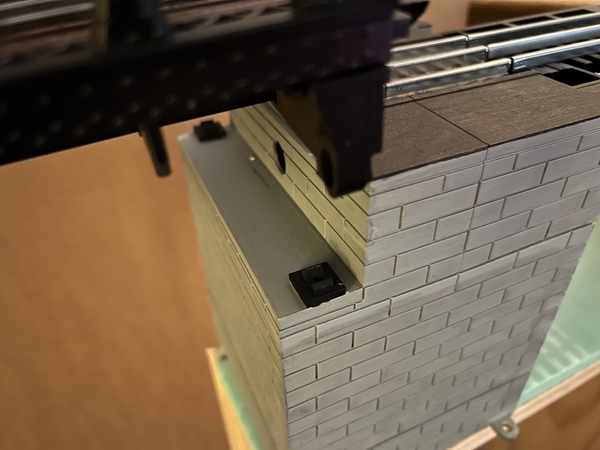
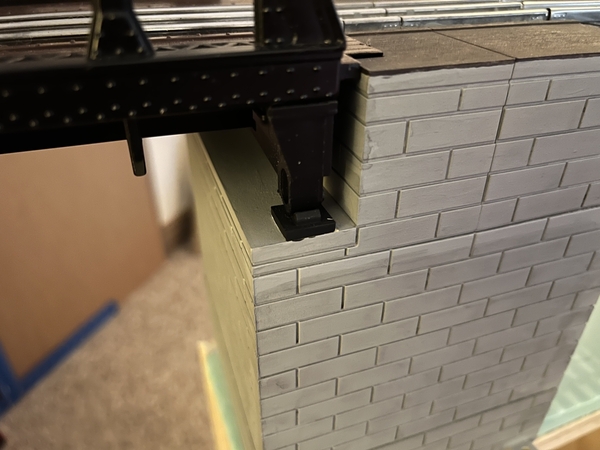
Now I am not going to say there aren’t some drawbacks. This bridge is not permanently hinged like some of the custom bridges and tables above. It’s either in or out, and for me that works fine. When I don’t need it and I am not using the trains, I place it to the side. When I am running the trains, I put it in place. My track is about 40” from the floor, so I can also duck under if needed.
I needed to paint the bridge abutments. The color they ship in is not prototypical or natural. I needed them gray, so I took the time and painted them. I will be doing light weathering on the whole bridge when I have time
The bridge being Fastrack doesn’t matter for me. I use Fastrack now, and if I need to change in the future, I’ll buy an adapter track. This bridge is too nice to not use on another layout. It may not be Atlas detail, but it is solid metal frame with a few plastic details. It easily holds all my trains from 611 to 4014.
I am promoting this bridge because I think Lionel did a great job on it. I would definitely buy another if needed. I like the product, it works, and I am happy. It may not work for all, but it definitely shouldn’t be overlooked.








